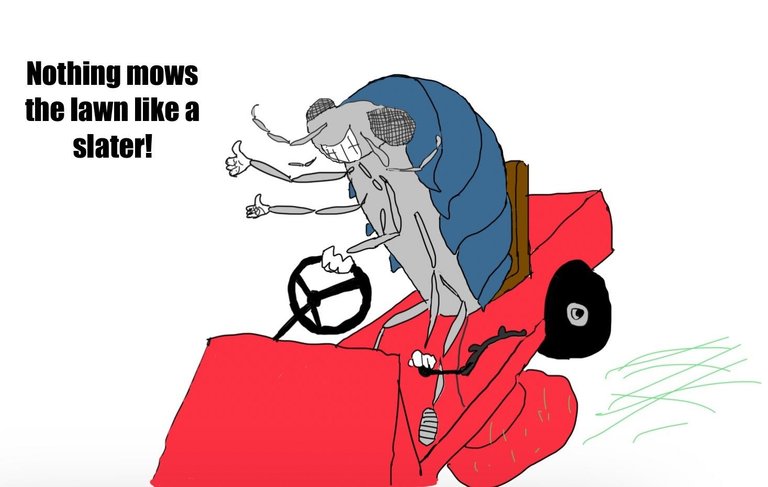Today was great day. I spent it helping a friend save some of his plants. It was a rescue operation. Much to my friend's delight (and surprise) most of them can survive our winters. The question is, will they? There is plenty of open real estate outdoors and much to my delight, plenty of new invertebrates to discover!
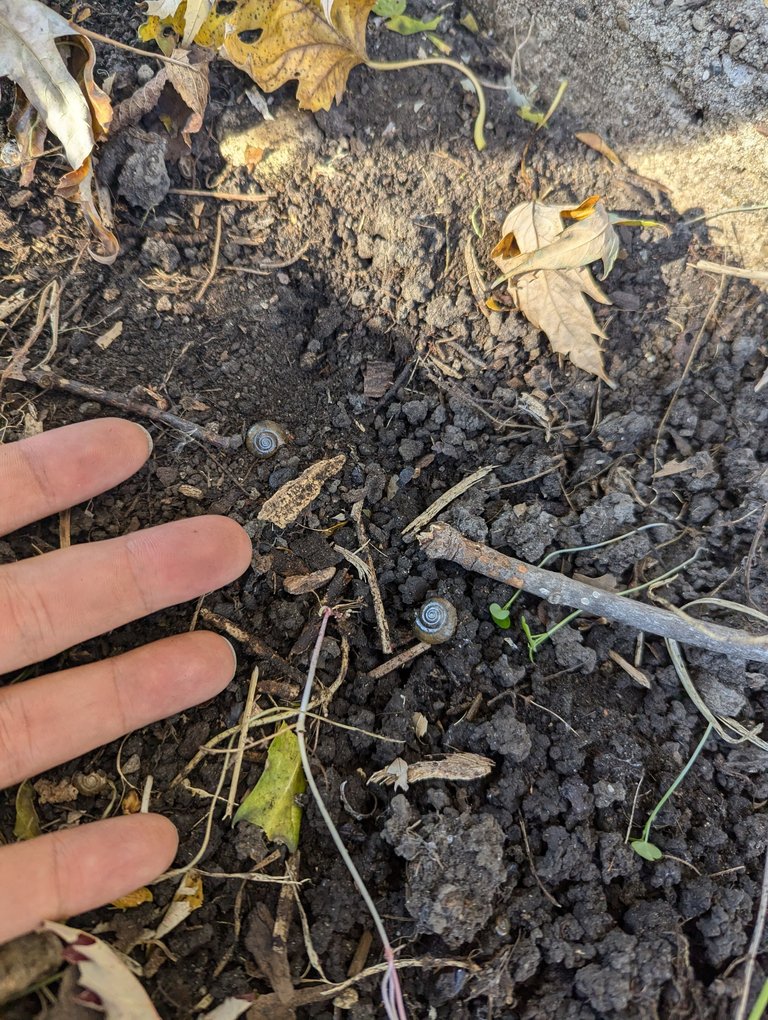
Just under the leaf litter were a couple of giant snails. Okay, maybe not "giant" but still colossal compared to my native yard snails. There are some like these, some a little more dissimilar, and others more unicorn-like in the spiral but all tiny. I even put one in my ant farm (so lonely, might need some friends but at least enjoys the ambient humidity). After some due research and identification, maybe I'll bring these "new" species home with me some day (just a few miles north).
(I have already exiled some of my founding/parent generations of slaters from other terrariums into the new compost pile I've built right in the middle of my main garden bed. I'm artificially selecting the more orange ones.)
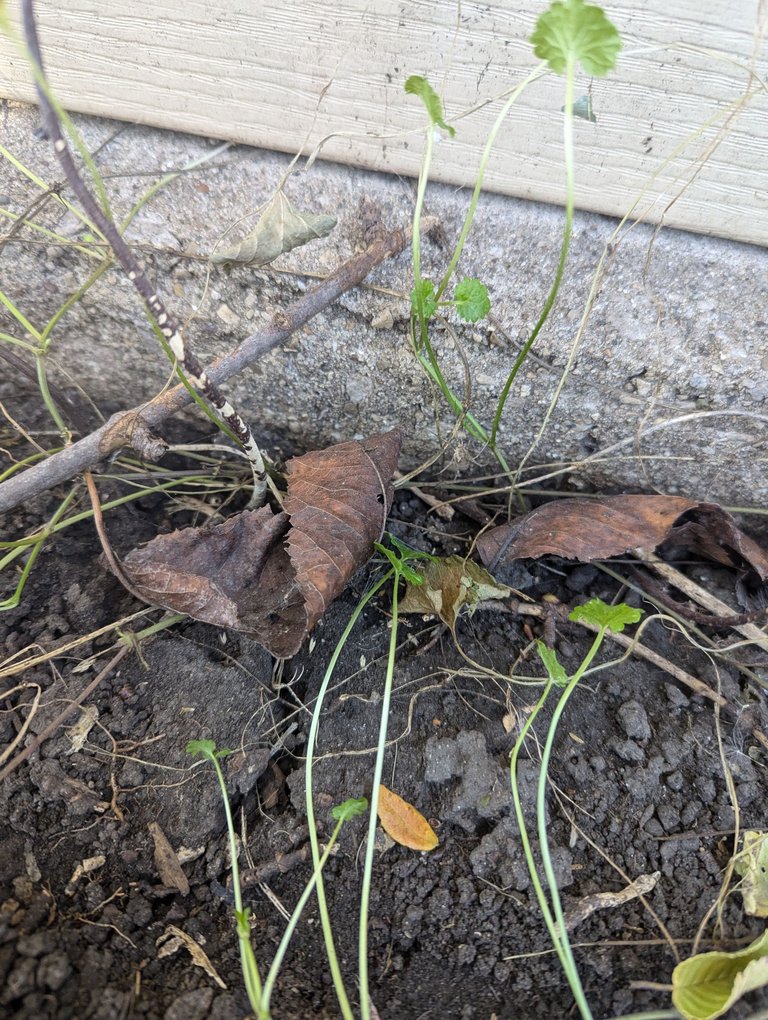
I think there might have been a harvestman in this shot, unless it escaped my gaze... Actually, I just found it. It is climbing the top most weed (invasive "Creeping Charlie" mint type), in between the two dried leaves. It is the same color as the foundation in the background! I don't have these in my garden so I want to bring them, too. What could go wrong with a little more diversity?
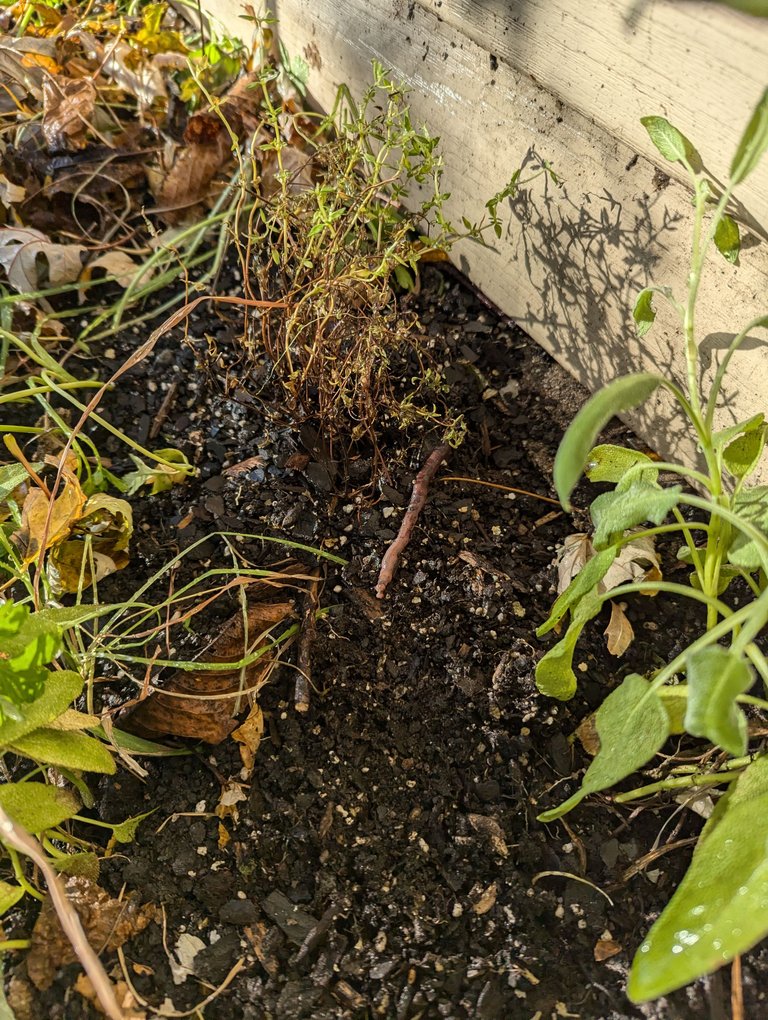
So what do we have to work with? It was a lot of parsley, lemongrass, thyme, and sage. Most of them were not looking too good. They were stressed, leggy, over- and underwatered, and quite frankly dying. I was able to convince my buddy that they would do better outside, as long as he still got to keep some inside to look at. Rest assured. A sizeable earthworm trudges along after I relocated it. I discovered it while digging a hole for one of the last sage plants. Yes, if you look closely I accidentally clipped a bit of his(hermaphrodite) tail. Honestly he'll be fine. I've done much much worse with the trowel but Mr. Worm says I shouldn't really brag about that...
Seeing him is a good indicator that either the hammerhead worms I discovered in a previous visit haven't made it to this part of the yard, OR these earthworms dig too greedily and too deep and basically just occupy a different niche.
I'm fairly certain the parsley can grow perennially in this zone (5?) but I'm not so sure about the lemongrass. Well maybe the rumors are true and we'll have a super mild winter...
...or hyper extreme superwinter. Maybe we'll add some coldframes. For now, we'll add a
first layer of hardwood leaves as mulch.
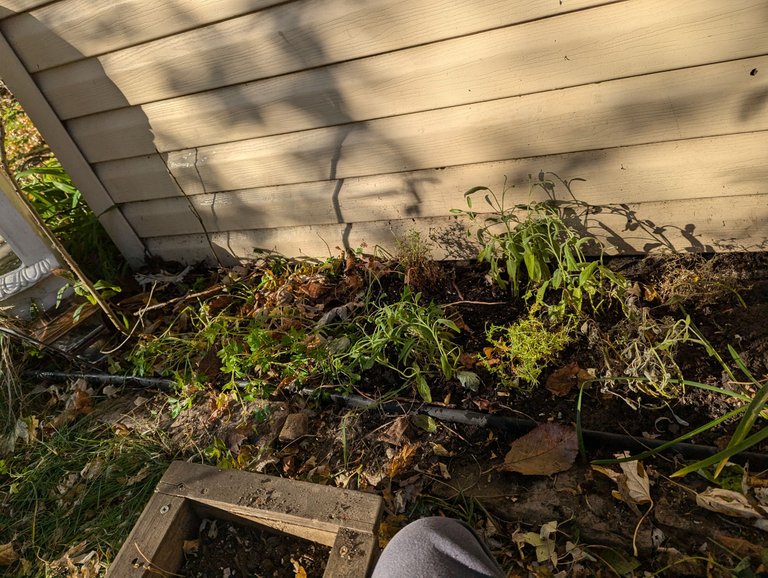
Almost done here. It won't be much longer now. I tried to start on the left side with what I believed to be the ones with the least invasive growth habit. I didn't want the plants to try and compete with the cherry and peach saplings. I intermingled the herbs so there is some overlap. There wasn't much weeding to do since some empty window pots were left there to smother the weeds some time ago. And even then, that charlie is a pushover.
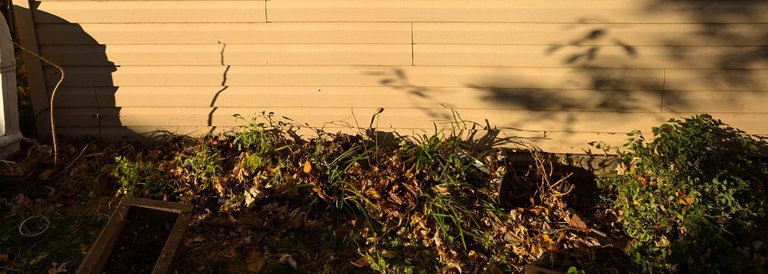
I like it! It almost looks just like it did before I started, camouflaged with the leaves.
Now, the survivors will have more ample room to grow in. Many were individualized to their own pots, but there's also more room topside in general and less crowding.
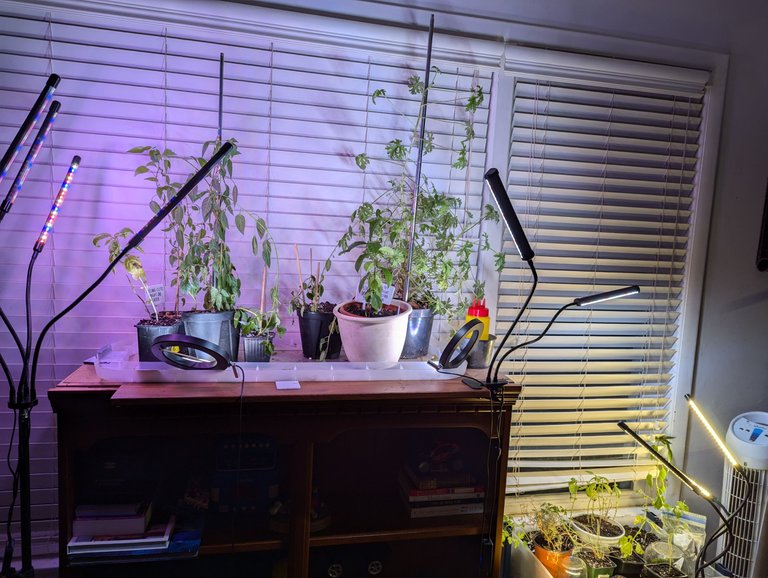
Some of those peppers also got new homes and are still acclimating to the soil that was bone dry just moments ago. Actually, those are "chile de arbol" peppers grown from seeds from many peppers I gave to 2 of my friends. My mother harvested these peppers from my grandpa's garden and everyone has loved them. The peppers from this summer are inferior. I think their gene pool has been contaminated by jalapeno hybridization and natural genetic deviation from those original plants. These plants, being the offspring of the original, have the potential to still be a 'watered-down' version of the parent plants, just like how I'm just a faded photocopy of my father. I still think peppers from these might be genetically more 'pure' and closer to the generation we're idolizing. The only thing purer would be clones made from cuttings of those. That's not an option. The original plants are probably either in a landfill, assimilated into the soil, or in the lake. One of these lost pepper children is returning home with me, along with several other stragglers. Extra pots left over allowed us to individualize some basil plants too!
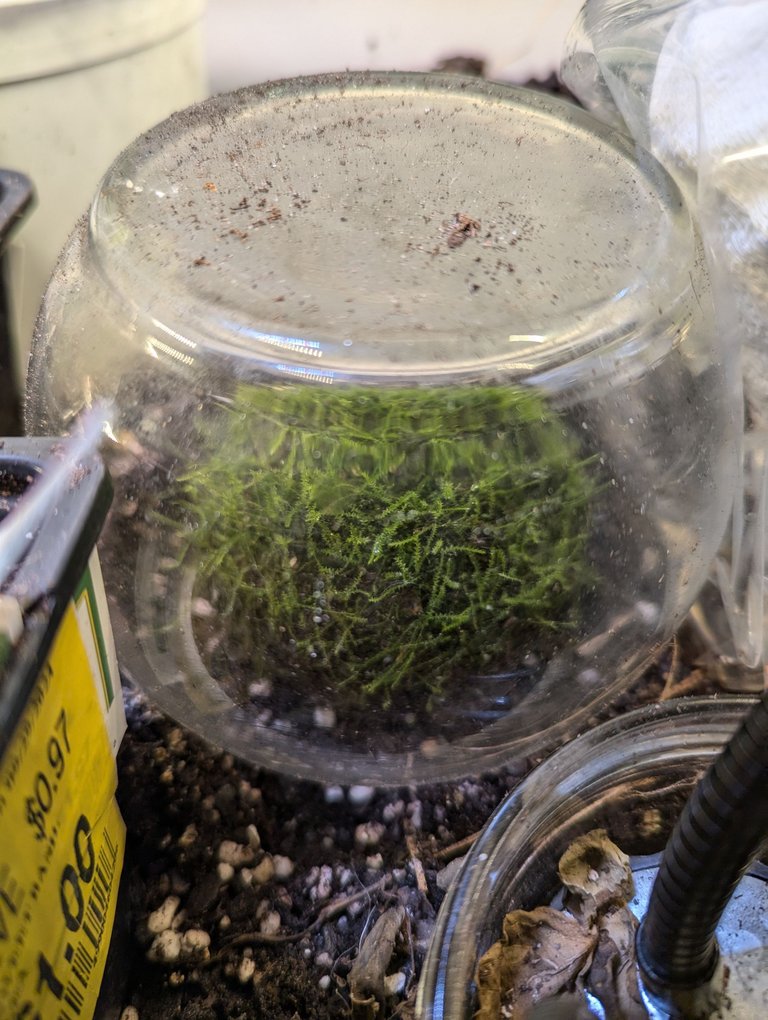
Also, check this out! He has two of these (and even gave me one; it is dormant in my backyard). Apparently the verdant moss was almost completely decimated in an event known as the Terrible Pruning. As the story goes, just a small number of incredibly small primordial isopods lived on this mossy world, back when even the moss was only beginning to take hold. They grew in tandem. Eons of uninhibited grazing became voracious devouring, but it is said that there was divine intervention in the end. According to conspiracy theorists, this apocalypse is cyclical.
